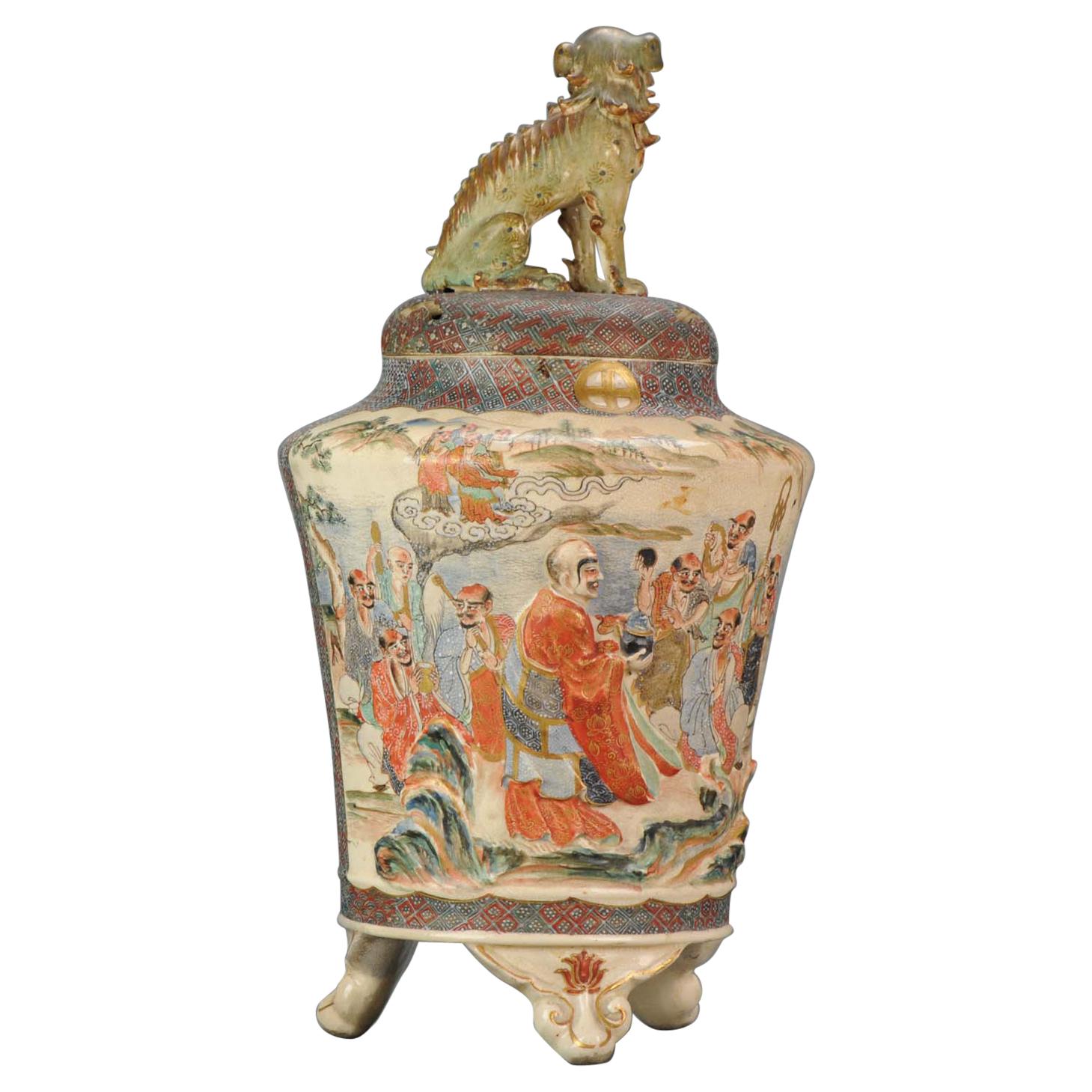Welcome to the fascinating world of antique Japanese Satsuma ceramics! As a collector and enthusiast, I can speak to the beauty and intricate craftsmanship behind these stunning pieces. In this article, we will explore the detailed history of Satsuma ware, the significance of decorated fish lidded items, and essential tips for collectors. Whether you’re a seasoned aficionado or a curious newcomer, this guide will serve as your comprehensive resource.
Understanding Satsuma Ware
What is Satsuma Ware?
Satsuma ware refers to a style of Japanese pottery that originated in the Satsuma region during the late 16th century. Known for its distinctive glaze and vibrant decorations, Satsuma is characterized by its intricate designs that often include motifs from nature, mythology, and daily life.
A Brief Historical Overview
Initially produced for export to Europe and America, Satsuma ware quickly gained popularity due to its unique aesthetic and cultural significance. The early pieces were primarily influenced by Chinese ceramics but evolved over time to incorporate more indigenous Japanese themes. By the 19th century, Satsuma ceramics had found a secure place in the hearts of collectors worldwide.
Key Historical Context
- 16th Century: Satsuma ware begins production in southern Japan.
- 19th Century: The rise of export pottery, particularly during the Meiji period.
- Present Day: Satsuma remains a sought-after collectible for antique enthusiasts.

Features of Decorated Fish Lidded Satsuma
Design Elements
Decorated fish lidded Satsuma pieces are part of a unique subset known for their charming representations of aquatic life. These items typically feature:
- Intricate Patterns: Fine detailing often showcases fish, waves, and marine plants.
- Color Palette: Rich colors such as blues, greens, and golds are prevalent.
- Functional Art: While they are decorative, these lidded pieces were also designed for practical use.
Symbolism of Fish in Japanese Culture
Fish hold significant symbolism in Japan, representing prosperity, abundance, and good fortune. As such, these decorated fish lidded pieces serve not only as stunning decorative artifacts but also as cultural tokens of good luck.
Popular Motifs
Common motifs found on decorated fish lidded Satsuma ceramics often include:
- Koi fish, symbolizing perseverance and strength.
- Carp, associated with success in achieving goals.
- Waves and natural elements, enhancing the aquatic theme.

Collecting Antique Satsuma: Tips and Considerations
Assessing Authenticity
When collecting antique Satsuma, it is critical to assess authenticity. Here are some key indicators:
- Maker’s Marks: Look for Japanese characters or stamps, often found on the bottom of the pieces.
- Glaze Quality: Authentic Satsuma will have a distinct, uneven texture thanks to its hand-crafted nature.
- Color and Design: Ensure the colors are vibrant and the designs offer a level of detail that speaks to high-quality craftsmanship.

Where to Buy Antique Satsuma
Finding reputable sellers is crucial. Consider the following sources:
- Auction Houses: Renowned auction houses often sell authentic antique Satsuma.
- Antique Shops: Specialized antique shops may have collections of Satsuma pieces.
- Online Marketplaces: Websites like eBay and Etsy can offer gems, but always check seller ratings and reviews.
Pros and Cons of Collecting Antique Satsuma
| Pros | Cons |
|---|---|
| Unique historical significance | Can be expensive, especially rare pieces |
| Beautiful craftsmanship | Risk of buying replicas without proper verification |
| Diverse designs and themes | Requires ongoing market knowledge to avoid overpaying |

Maintaining Your Satsuma Collection
Cleaning and Care
Proper care is essential to maintain the beauty and integrity of your Satsuma pieces:
- Dust Regularly: Use a soft, dry cloth to remove any dust.
- Avoid Harsh Chemicals: Use only mild soaps when necessary.
- Store Carefully: Keep pieces in a stable environment, avoiding direct sunlight and extreme temperatures.

Displaying Your Collection
How you choose to display your antique Satsuma can enhance its beauty. Consider these tips:
- Showcase Unique Pieces: Use display cases to highlight your favorite items.
- Complementary Decor: Choose backgrounds that accentuate the colors and designs of your Satsuma ware.
- Rotation: Changing displays allows for appreciation of different pieces while protecting them from prolonged exposure to light.
Conclusion: The Enduring Charm of Satsuma Ceramics
In summary, antique Japanese Satsuma, particularly decorated fish lidded pieces, possess a unique charm that transcends time. Their historical significance, exquisite craftsmanship, and cultural symbolism make them a valuable addition to any collection. Whether you’re looking to embark on your collecting journey or simply appreciate the artistry, Satsuma ceramics offer a glimpse into Japanese heritage that is both beautiful and meaningful.
FAQs about Antique Japanese Satsuma
What makes Satsuma ceramics unique?
Satsuma ceramics are known for their distinctive glazes and intricate designs, often featuring gold embellishments. The craftsmanship reflects a blend of Japanese and Chinese influences, creating a unique aesthetic.
How can I identify a genuine Satsuma piece?
Look for maker’s marks on the base, assess the quality of the glaze and detailing, and verify the provenance of the piece through reputable dealers.
Are there different types of Satsuma ware?
Yes, Satsuma can be categorized into various types based on themes, colors, and functions. Examples include decorative vases, tea sets, and lidded jars.
How do I value my Satsuma collection?
Valuing Satsuma involves considering factors such as age, condition, rarity, and demand in the market. Consulting with antique appraisers or auction houses is recommended for an accurate valuation.
Can Satsuma ware be used for food?
While some Satsuma pieces are functional, it’s often advised to use them primarily for decorative purposes due to the potential presence of lead in glazes used historically.